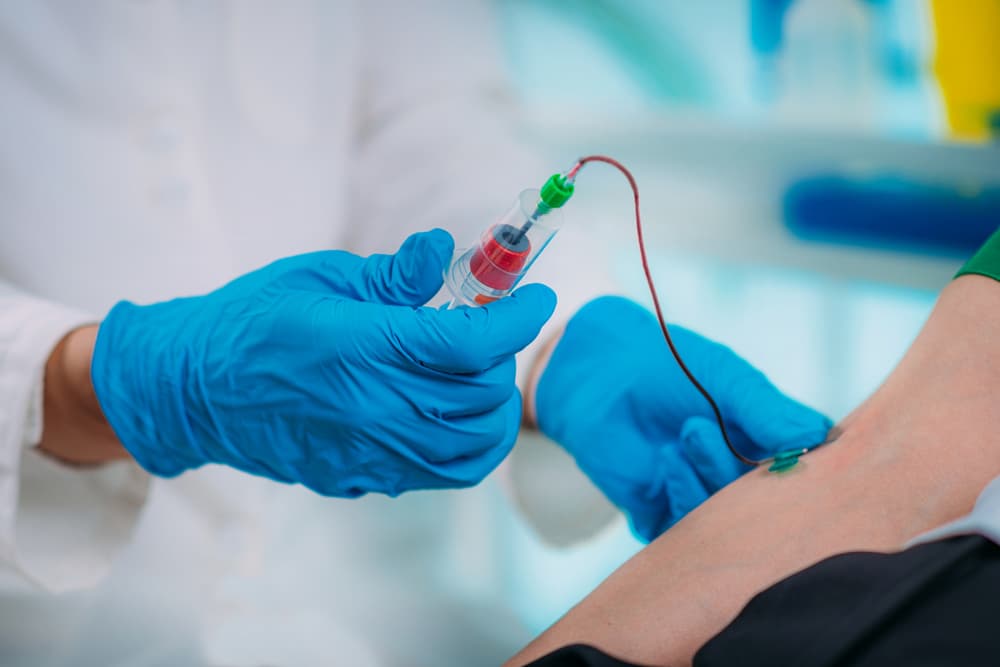
The Most Commonly Used Equipment in Phlebotomy
Scrubs
When it comes to handling bodily fluids — especially blood — health care professionals can never be too careful. Exposure to blood can increase a phlebotomist’s risk of bloodborne pathogens, including HIV/AIDS, hepatitis B, and hepatitis C. Though the risk of contracting such an illness from blood exposure is low, it’s still important to prevent — and that’s why scrubs are important. Scrubs minimize the risk of cross-contamination of bodily fluids because they are made from thick, medical-grade materials that block any bodily fluids from seeping through.Non-Sterile Gloves
Non-sterile gloves are another barrier of protection that’s important for phlebotomists to invest in. Sterile gloves are typically reserved for use in surgical procedures, so for a blood draw, non-sterile gloves are ideal. This is important for the same reason it’s important to wear scrubs. Gloves prevent potential exposure to blood from a patient and thus minimize the risk of exposure to bloodborne pathogens.Alcohol Pad
One of the most important principles of phlebotomy is ensuring the integrity of the collected sample. If a sample is contaminated, it can yield false results or force a patient to later resubmit a new sample — both of which can threaten a patient’s health and wellbeing when test results are time-sensitive. In order to effectively prevent contamination of the blood sample, a phlebotomist must cleanse the draw site prior to venipuncture. This is typically done by using an alcohol pad on the skin. Alcohol is a natural antiseptic, so it quickly removes any bacteria or residue which might compromise a blood sample.Tourniquet
Some patients have veins that are immediately visible and easy to access, but others are not so lucky. Regardless of how easy a blood draw may look, it’s always best to take steps to make the target vein as accessible as possible. A tourniquet is key to accomplishing this goal. When applied, a tourniquet will limit the blood flow to a limb, making it easier for a phlebotomist to draw blood due to the dilation of the vein.Needles
Needles, of course, are perhaps the most essential tool for phlebotomists. Needles come in all shapes, sizes, and gauges, but the most commonly used gauge for venipuncture is 21. However, a 16 gauge need may be used for blood donation, and injections may call for a 30 gauge needle. It’s essential to have a range of needles available to always have the best tool for the task at hand.Blood Collection Tubes
A phlebotomist who collects blood samples must have the correct containers for the blood to be collected in. Blood collection tubes are thus another important item in the tool kit of an effective phlebotomist. Different types of tubes are used for different types of collections—for example, the Microtainer® tube is often used to collect a blood sample from punctured skin on a person’s finger or heel. Alternately, a microhematocrit tube may be used for microhematocrit test collections.Labels
Correctly identifying a blood sample is just as important as correctly collecting it. A mislabeled or unlabeled sample can wreak havoc and jeopardize a patient’s health. Labels should always be completed and applied to a patient’s sample immediately after being collected.Gauze or Bandages
Gauze and bandages are two of the most essential supplies for any phlebotomist. After a sample has been taken, a patient’s venipuncture site should be covered in order to encourage clotting, stop bleeding, and prevent infection. Both gauze and bandages can accomplish this and protect a patient’s wound. Bandages and gauze also help to absorb excess blood that may continue to flow after the draw has been completed.Syringe
Sometimes, if a patient has particularly fragile or small veins, a syringe may be necessary to complete the collection. Syringes are useful for this purpose because they allow for aspiration that prevents the collapse of the vein. Using a needle that is too big can easily cause swelling that results in vein collapse, which can quickly become a serious medical trauma.Safety Trainer Device
The safety trainer device is a vital protective tool that prevents phlebotomists from potential exposure to a patient’s blood. These devices come in various forms, but they’re most commonly implemented in the form of a resheathing device that covers the needle after use. This protects phlebotomists from accidentally sticking themselves with a needle while transferring a blood sample into the vacuum tube from a syringe.BD Eclipse
The BD Eclipse is a multi-sample collection needle that utilizes a vacuum system. It is most often used for venipuncture in conjunction with its vacuum tube collection feature. Phlebotomists can also enjoy the safety device that comes attached, which is part of the manufacturer’s SmartSlip technology. The needle’s pivoting shield further ensures the technician’s safety throughout the entire collection process.Find the Right Phlebotomist Training Program
If you’re interested in a career in phlebotomy, you probably want to know as much as possible about the medical field and its available careers. Phlebotomy is an excellent job for anybody who wants to help people while working in the fast-paced health care industry, and Allen School is the best place to learn the skills you need for a successful career. For more information on available training programs, start dates, and financial aid, you can call us at (888) 620-6745 or reach us online.Image Source: Microgen / Shutterstock
